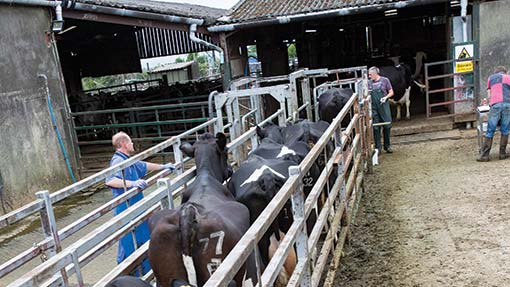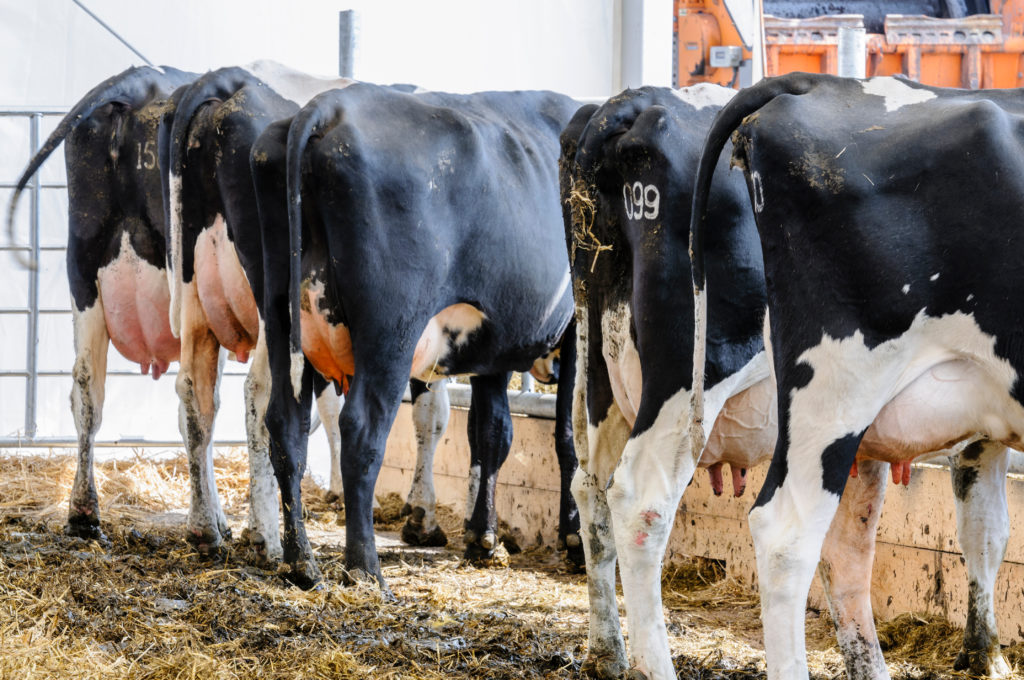Defra has published a report which highlights the financial impact of bovine TB on beef and dairy farms. The report shows the cost of a TB breakdown directly borne by cattle farms varies significantly, with a median value of around £6,600 across all farms in the survey.
In England and Wales, median costs for herds of more than 300 cattle are around £18,600 whilst those for herds up to 50 cattle are around £1,700. Median costs for chronic breakdowns over nine month’s duration are around £16,000. A TB breakdown has direct and indirect impacts on cattle farms. The main focus of the research was on generating estimates for the uncompensated and within-breakdown costs arising from having to comply with statutory requirements like movement restrictions and testing. This work was funded by the bovine TB research budget held and administered centrally by Defra on behalf of England, Scotland and Wales.


This report shows that, whilst the financial cost of a TB breakdown varies significantly depending on farm circumstances, the median cost of a breakdown is £6,600. Not all farms experience all categories of cost, and costs increase with herd size, breakdown duration and with the number of animals compulsorily slaughtered. Across England and Wales, median costs for large herds (over 300 cattle) are £18,600 whilst those for very small herds (1-50 cattle) are £1,700. The median cost for chronic breakdowns over nine month’s duration are £16,000, and those for very short breakdowns (less than 150 days) are £4,600.
This work illustrates the financial impact that bovine TB has on the farming community and the importance of contingency planning should the worst happen. Find out how you can reduce the impact of a TB breakdown on your farm by visiting our contingency planning page. The findings of this report will be incorporated into Defra’s future cost/benefit calculations and other economic analyses of bovine TB policy options.
Q&A
Detailed questionnaires were developed and trialled based on existing literature and expert opinion, including advisory support from the National Farmers Union (NFU), NFU Cymru and farmers. All farmers who received a letter about the project were phoned and offered the opportunity to participate in a detailed interview. The final sample achieved was 1,604 which was slightly over the 1,500 target. The generated breakdown cost estimates were calculated from a large and statistically representative sample. The survey results have updated and improved previous consequential cost estimates.
The survey results confirm findings reported in the literature and expert opinion that both the composition and magnitude of consequential costs vary greatly across breakdowns, reflecting differences both in the circumstances of the farm and in the timing, size and duration of breakdowns. The report presents median costs as defined by numerous categories, providing robust estimates of costs in these different circumstances. The wide variation makes it difficult to characterise a typical cost. A few farms incur very high costs, but most suffer more modest ones. The final sample achieved was 1,604 which was slightly over the 1,500 target. The sample population was proven to be robust across all sub-categories of the six classifiers which were;
- TB risk area
- Herd type
- Herd size
- Animals with typical lesions of TB at post mortem inspection and/or those where the M. bovis bacterium was isolated from tissue cultures
- Duration of breakdown
- Number of breakdowns
The survey is very likely to have succeeded in generating a sample which is statistically representative of the target population.
The median is the middle value when a list of numbers are placed in ascending or descending order. This is different from the mean (average) which is the sum of the values divided by the number of values. The mean is affected by “outliers” (very high or very low values), which can artificially skew the average. The advantage of using the median is that it’s not affected by outliers in the data set. In this study median values were used because there was such wide variation in costs between farms. A few farms incur very high costs, but most suffer more modest ones. Using the median instead of the mean avoided skewing of the average values and produced a truer reflection of typical costs incurred.
The survey and report did not investigate additional costs associated with wildlife control, as it focussed on within-breakdown costs.
The questionnaire was primarily focused on financial within-breakdown costs. However, insights were gleaned into longer-term consequences of a TB breakdown, which emphasised the significant psychological and emotional burden. Implications on future ambitions for growth of the beef or dairy enterprise, in terms of loss of productivity were also indicated. The report recommends further research to help compose a more comprehensive picture of breakdown impacts.